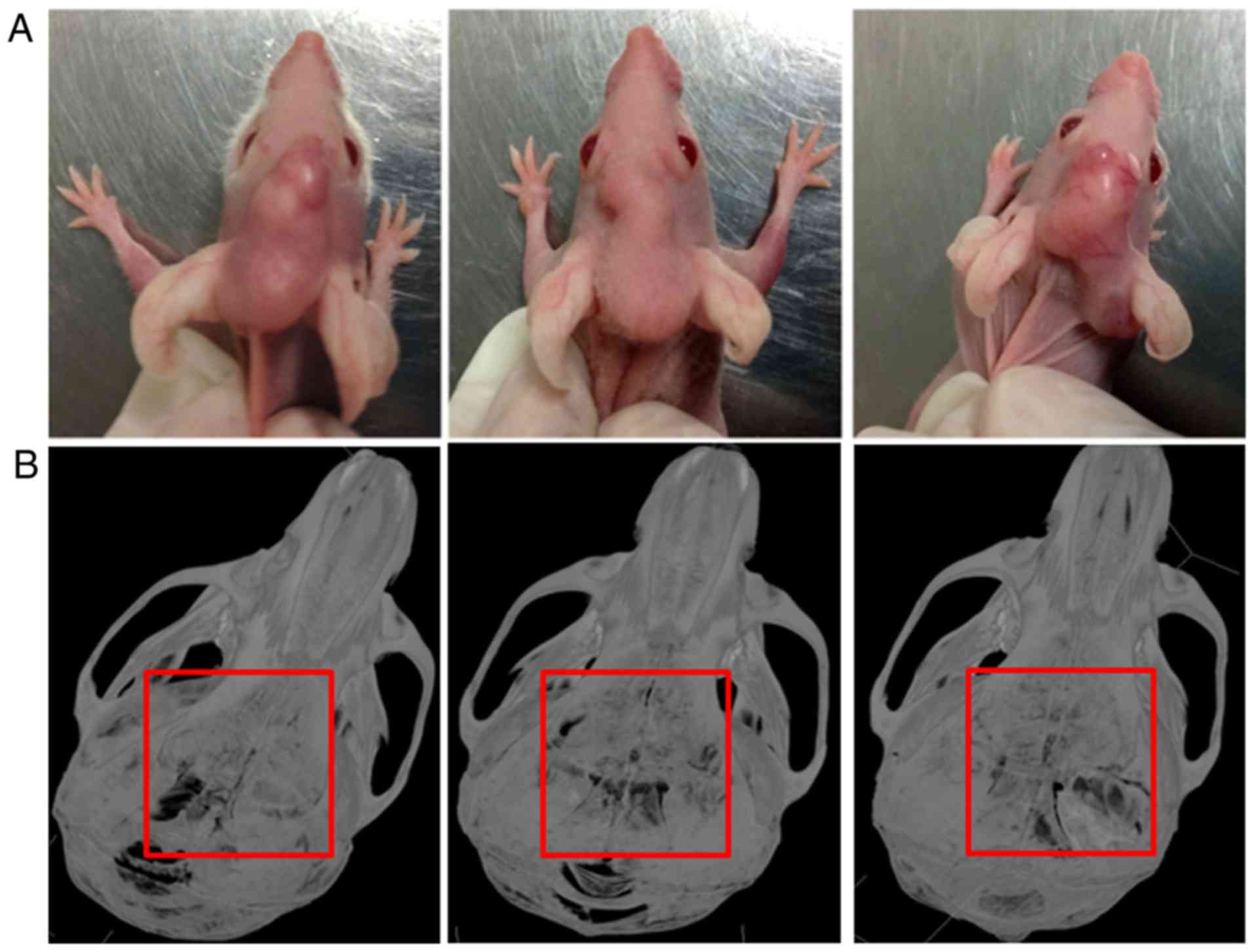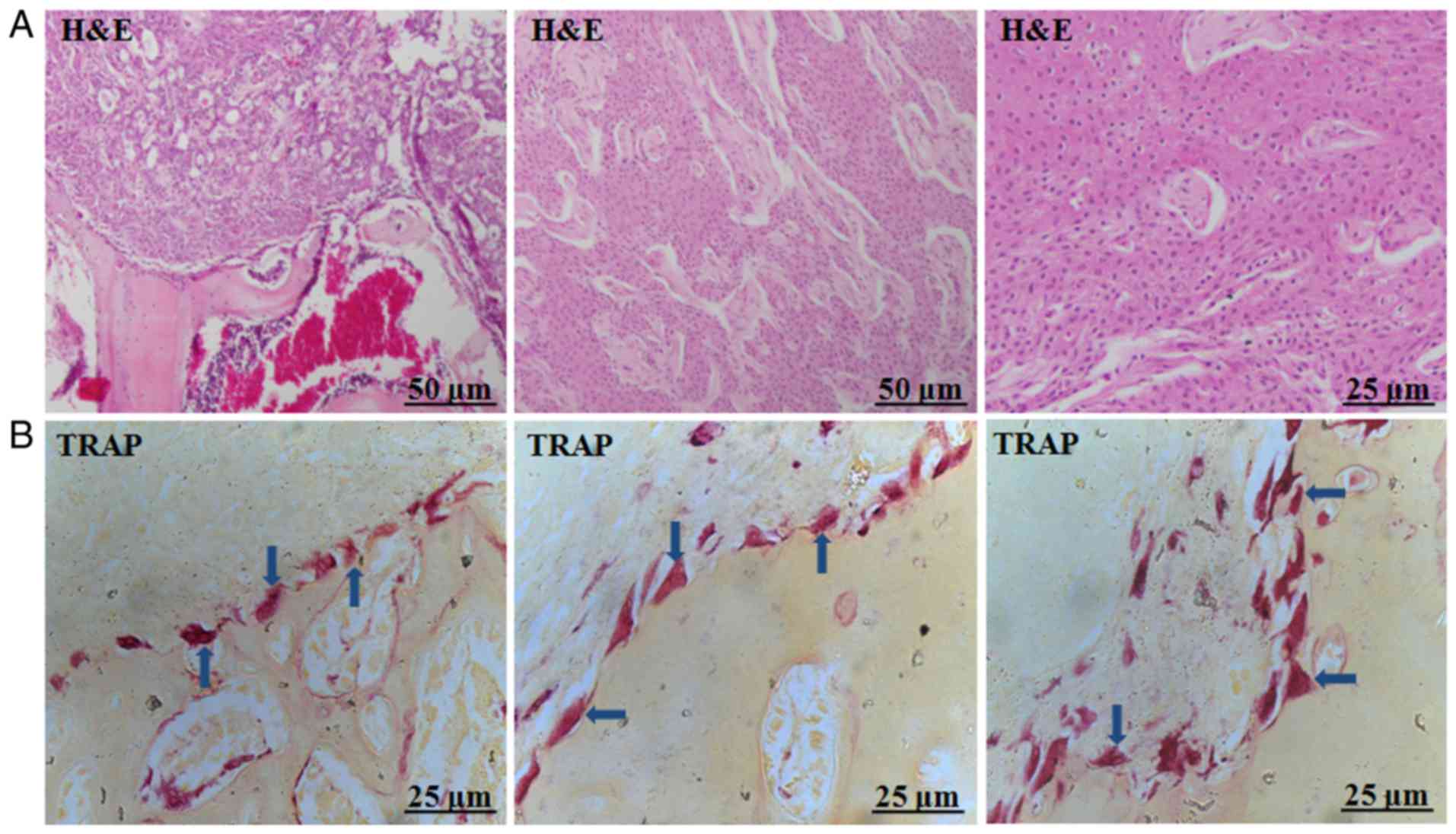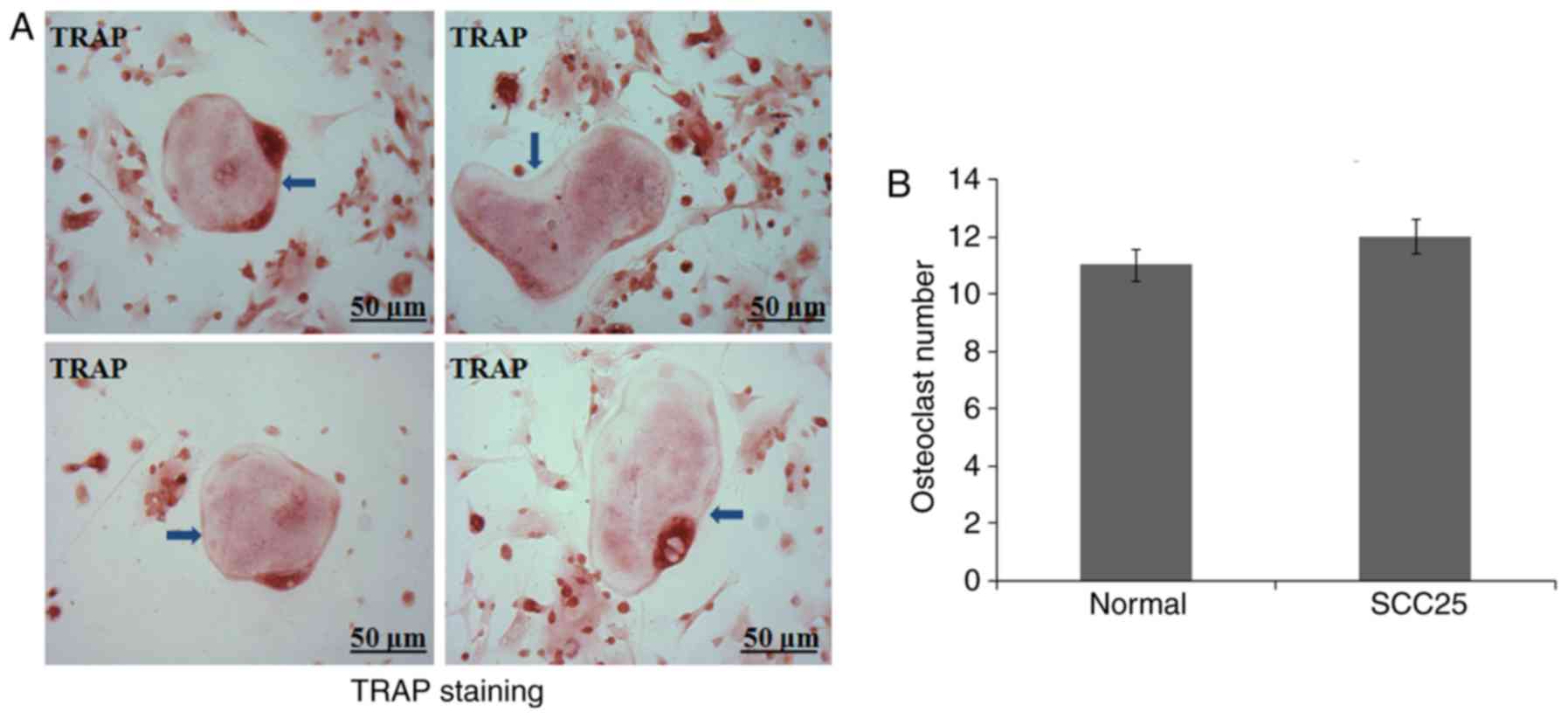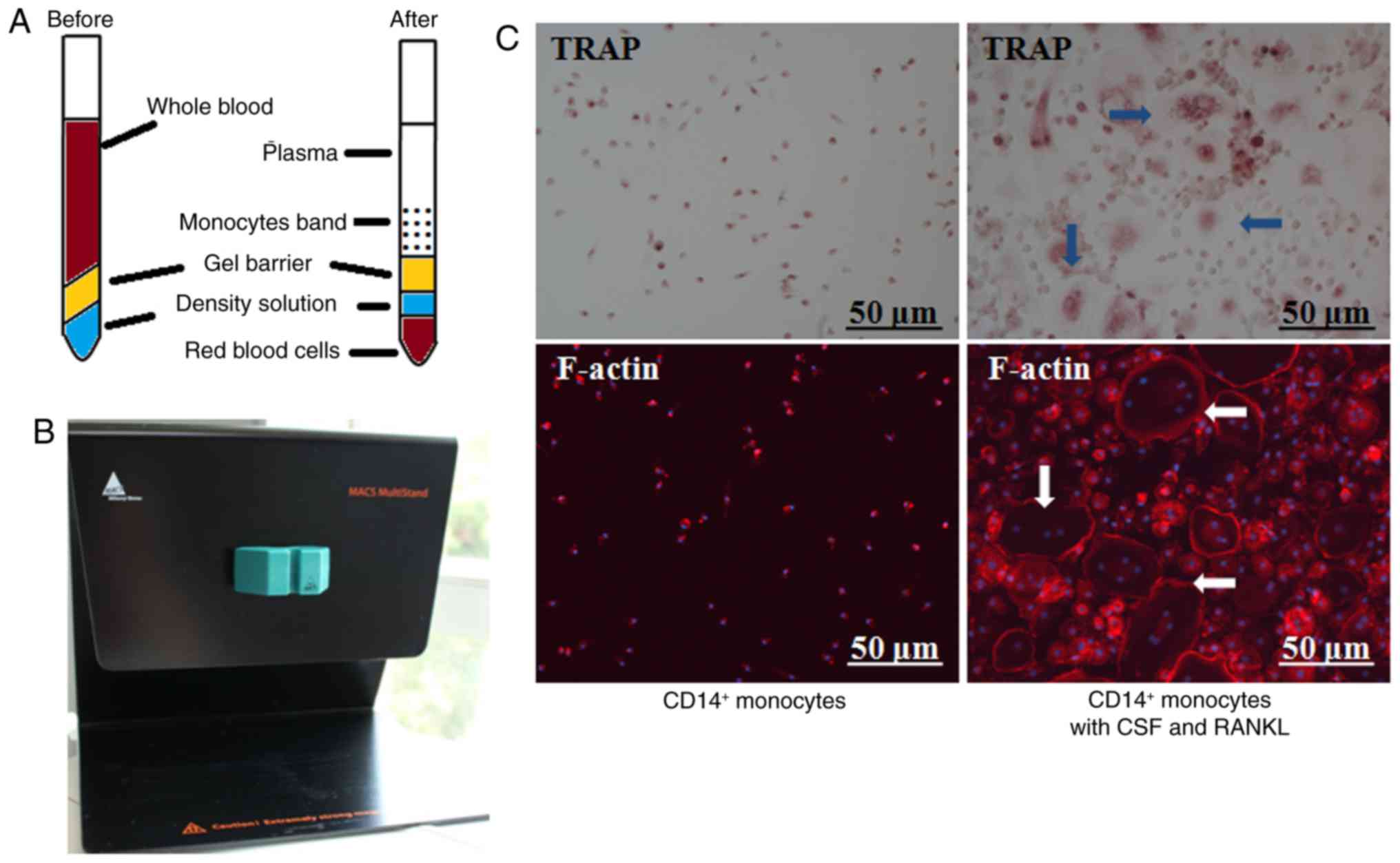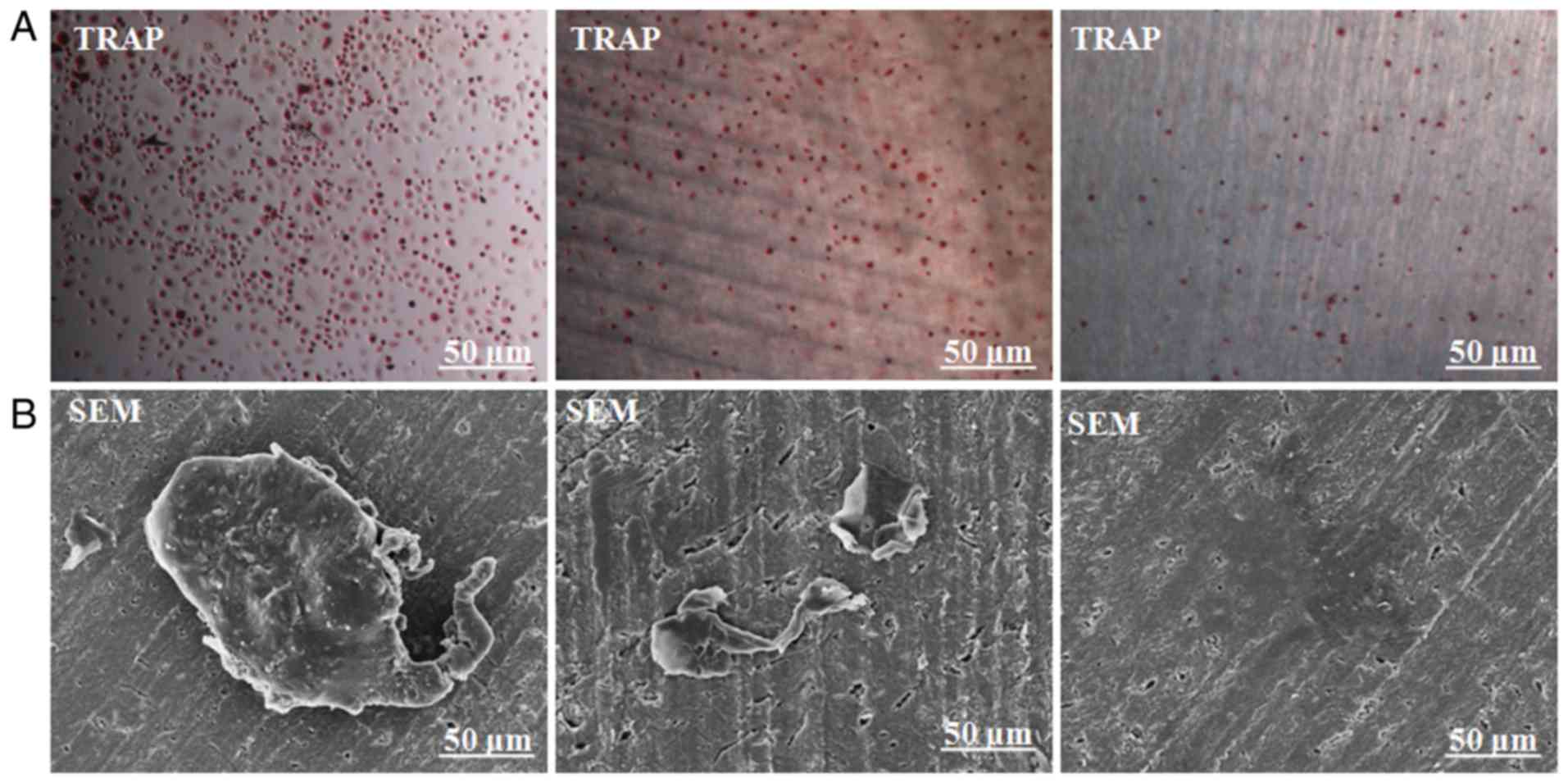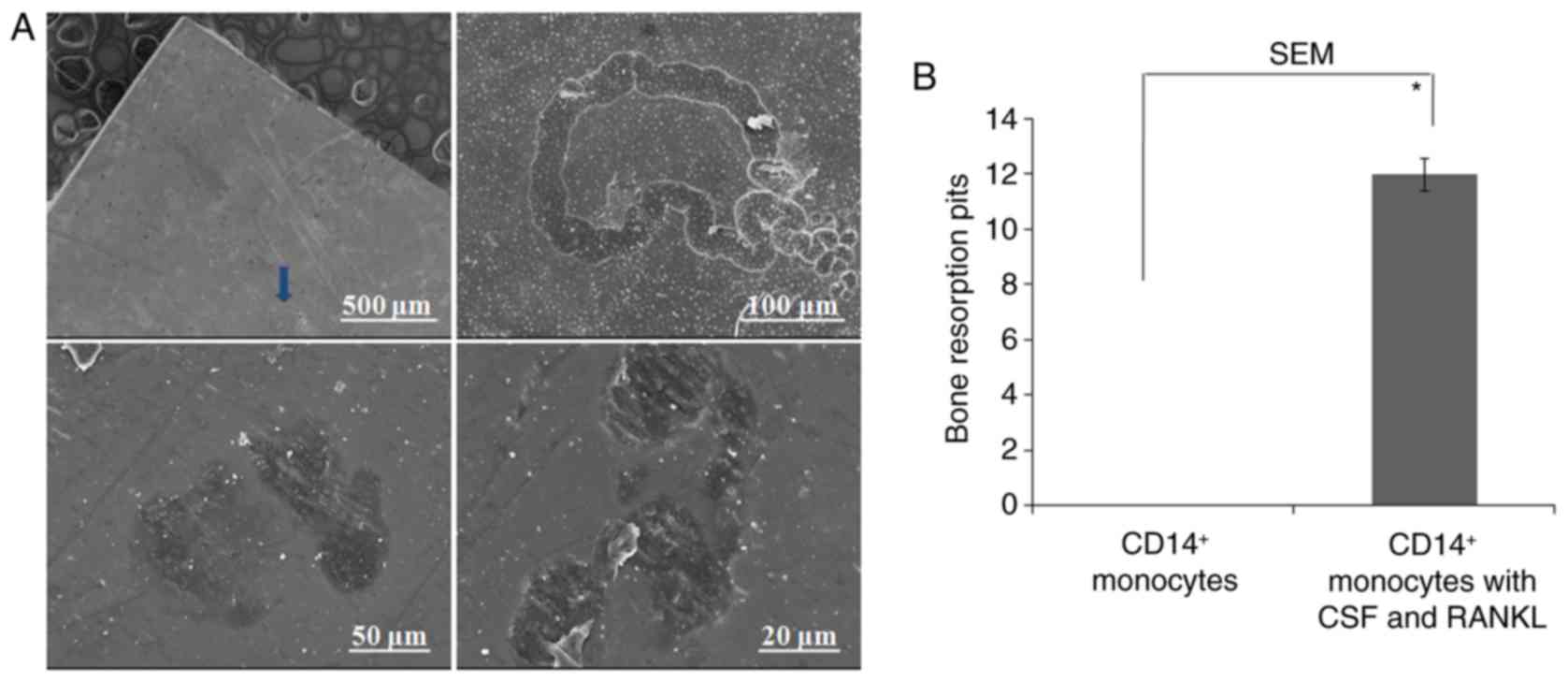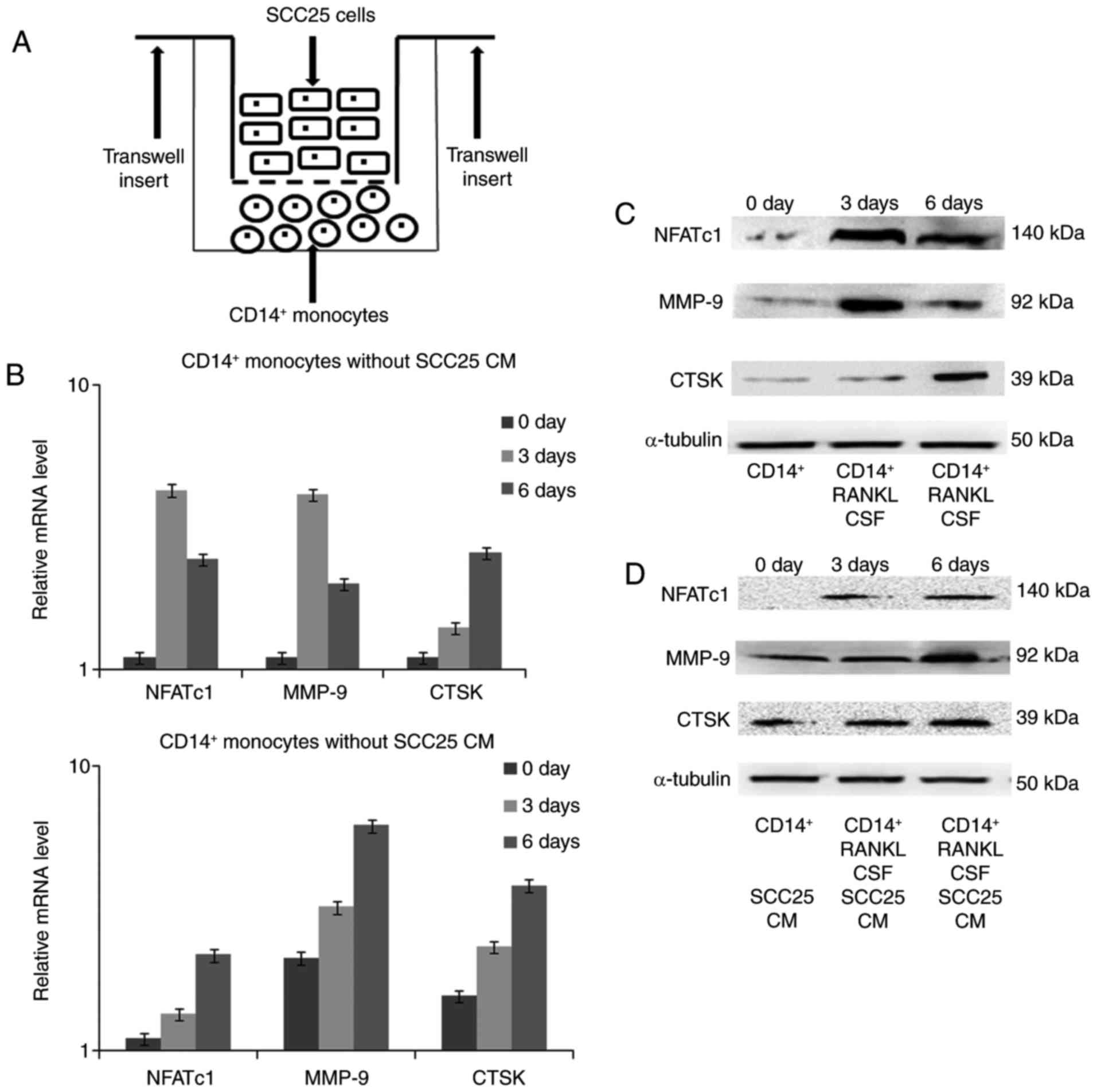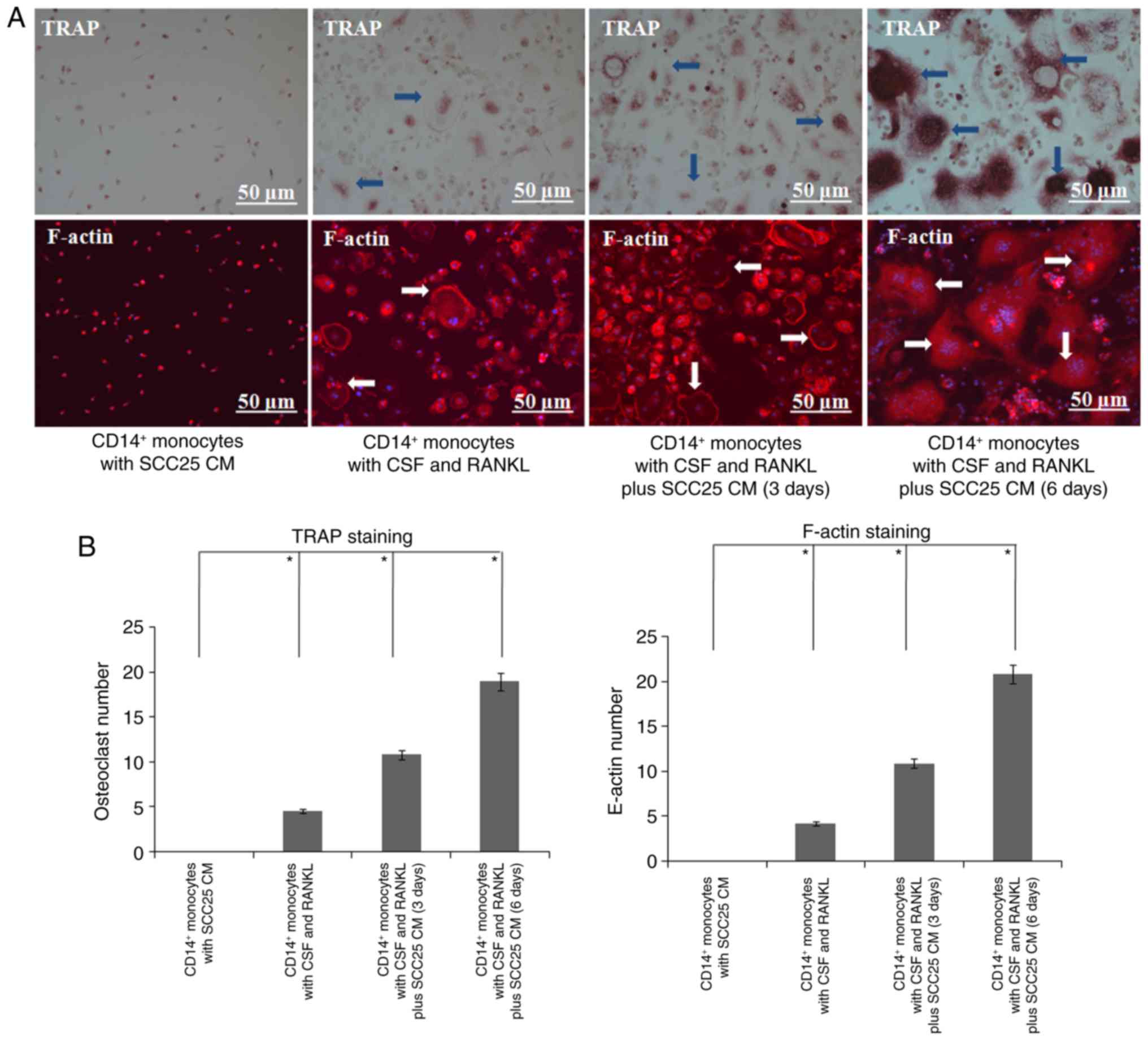|
1
|
Chambers TJ: The birth of the osteoclast.
Ann NY Acad Sci. 1192:19–26. 2010. View Article : Google Scholar : PubMed/NCBI
|
|
2
|
Dou C, Cao Z, Yang B, Ding N, Hou T, Luo
F, Kang F, Li J, Yang X, Jiang H, et al: Changing expression
profiles of lncRNAs, mRNAs, circRNAs and miRNAs during
osteoclastogenesis. Sci Rep. 6:214992016. View Article : Google Scholar : PubMed/NCBI
|
|
3
|
Chen X, Wang Z, Duan N, Zhu G, Schwarz EM
and Xie C: Osteoblast-osteoclast interactions. Connect Tissue Res.
8:1–9. 2017. View Article : Google Scholar
|
|
4
|
Strålberg F, Kassem A, Kasprzykowski F,
Abrahamson M, Grubb A, Lindholm C and Lerner UH: Inhibition of
lipopolysaccharide-induced osteoclast formation and bone resorption
in vitro and in vivo by cysteine proteinase inhibitors. J Leukoc
Biol. 101:1233–1243. 2017. View Article : Google Scholar : PubMed/NCBI
|
|
5
|
Martin TJ and Sims NA: RANKL/OPG; Critical
role in bone physiology. Rev Endocr Metab Disord. 16:131–139. 2015.
View Article : Google Scholar : PubMed/NCBI
|
|
6
|
Quan J, Johnson NW, Zhou G, Parsons PG,
Boyle GM and Gao J: Potential molecular targets for inhibiting bone
invasion by oral squamous cell carcinoma: A review of mechanisms.
Cancer Metastasis Rev. 31:209–219. 2012. View Article : Google Scholar : PubMed/NCBI
|
|
7
|
Quan J, Zhou C, Johnson NW, Francis G,
Dahlstrom JE and Gao J: Molecular pathways involved in crosstalk
between cancer cells, osteoblasts and osteoclasts in the invasion
of bone by oral squamous cell carcinoma. Pathology. 44:221–227.
2012. View Article : Google Scholar : PubMed/NCBI
|
|
8
|
Quan J, Elhousiny M, Johnson NW and Gao J:
Transforming growth factor-β1 treatment of oral cancer induces
epithelial-mesenchymal transition and promotes bone invasion via
enhanced activity of osteoclasts. Clin Exp Metastasis. 30:659–670.
2013. View Article : Google Scholar : PubMed/NCBI
|
|
9
|
Quan J, Morrison NA, Johnson NW and Gao J:
MCP-1 as a potential target to inhibit the bone invasion by oral
squamous cell carcinoma. J Cell Biochem. 115:1787–1798. 2014.
View Article : Google Scholar : PubMed/NCBI
|
|
10
|
Khan UA, Hashimi SM, Bakr MM, Forwood MR
and Morrison NA: Foreign body giant cells and osteoclasts are TRAP
positive, have podosome-belts and both require OC-STAMP for cell
fusion. J Cell Biochem. 114:1772–1778. 2013. View Article : Google Scholar : PubMed/NCBI
|
|
11
|
Livak KJ and Schmittgen TD: Analysis of
relative gene expression data using real-time quantitative PCR and
the 2(−ΔΔC(T)) method. Methods. 25:402–408. 2001. View Article : Google Scholar : PubMed/NCBI
|
|
12
|
Kim MS, Day CJ, Selinger CI, Magno CL,
Stephens SR and Morrison NA: MCP-1-induced human osteoclast-like
cells are tartrate-resistant acid phosphatase, NFATc1, and
calcitonin receptor-positive but require receptor activator of
NFkappaB ligand for bone resorption. J Biol Chem. 281:1274–1285.
2006. View Article : Google Scholar : PubMed/NCBI
|
|
13
|
Morrison NA, Day CJ and Nicholson GC:
Dominant negative MCP-1 blocks human osteoclast differentiation. J
Cell Biochem. 115:303–312. 2014. View Article : Google Scholar : PubMed/NCBI
|
|
14
|
Xiong Q, Zhang L, Zhan S, Ge W and Tang P:
Investigation of proteome changes in osteoclastogenesis in low
serum culture system using quantitative proteomics. Proteome Sci.
14:82016. View Article : Google Scholar : PubMed/NCBI
|
|
15
|
Pivetta E, Wassermann B, Bulian P, Steffan
A, Colombatti A, Polesel J and Spessotto P: Functional
osteoclastogenesis: The baseline variability in blood donor
precursors is not associated with age and gender. Oncotarget.
6:31889–31900. 2015. View Article : Google Scholar : PubMed/NCBI
|
|
16
|
Penolazzi L, Lolli A, Sardelli L,
Angelozzi M, Lambertini E, Trombelli L, Ciarpella F, Vecchiatini R
and Piva R: Establishment of a 3D-dynamic osteoblasts-osteoclasts
co-culture model to simulate the jawbone microenvironment in vitro.
Life Sci. 152:82–93. 2016. View Article : Google Scholar : PubMed/NCBI
|
|
17
|
Szpalski C, Barbaro M, Sagebin F and
Warren SM: Bone tissue engineering: current strategies and
techniques - part II: Cell types. Tissue Eng Part B Rev.
18:258–269. 2012. View Article : Google Scholar : PubMed/NCBI
|
|
18
|
Zhang M and Huang B: The
multi-differentiation potential of peripheral blood mononuclear
cells. Stem Cell Res Ther. 3:482012. View
Article : Google Scholar : PubMed/NCBI
|
|
19
|
Mayer A, Lee S, Lendlein A, Jung F and
Hiebl B: Efficacy of CD14+ blood monocytes/macrophages
isolation: Positive versus negative MACS protocol. Clin Hemorheol
Microcirc. 48:57–63. 2011.PubMed/NCBI
|
|
20
|
Sprangers S, Schoenmaker T, Cao Y, Everts
V and de Vries TJ: Integrin αMβ2 is differently expressed by
subsets of human osteoclast precursors and mediates adhesion of
classical monocytes to bone. Exp Cell Res. 350:161–168. 2017.
View Article : Google Scholar : PubMed/NCBI
|
|
21
|
Castillo LM, Guerrero CA and Acosta O:
Expression of typical osteoclast markers by PBMCs after PEG-induced
fusion as a model for studying osteoclast differentiation. J Mol
Histol. 48:169–185. 2017. View Article : Google Scholar : PubMed/NCBI
|
|
22
|
Teixeira LN, de Castro Raucci LM, Alonso
GC, Coletta RD, Rosa AL and de Oliveira PT: Osteopontin expression
in co-cultures of human squamous cell carcinoma-derived cells and
osteoblastic cells and its effects on the neoplastic cell phenotype
and osteoclastic activation. Tumour Biol. 37:12371–12385. 2016.
View Article : Google Scholar : PubMed/NCBI
|
|
23
|
Hemingway F, Cheng X, Knowles HJ, Estrada
FM, Gordon S and Athanasou NA: In vitro generation of mature human
osteoclasts. Calcif Tissue Int. 89:389–395. 2011. View Article : Google Scholar : PubMed/NCBI
|
|
24
|
Khan UA, Hashimi SM, Khan S, Quan J, Bakr
MM, Forwood MR and Morrison NM: Differential expression of
chemokines, chemokine receptors and proteinases by foreign body
giant cells (FBGCs) and osteoclasts. J Cell Biochem. 115:1290–1298.
2014. View Article : Google Scholar : PubMed/NCBI
|
|
25
|
Khan UA, Hashimi SM, Bakr MM, Forwood MR
and Morrison NA: CCL2 and CCR2 are essential for the formation of
osteoclasts and foreign body giant cells. J Cell Biochem.
117:382–389. 2016. View Article : Google Scholar : PubMed/NCBI
|
|
26
|
Shabo I, Midtbö K, Andersson H, Åkerlund
E, Olsson H, Wegman P, Gunnarsson C and Lindström A: Macrophage
traits in cancer cells are induced by macrophage-cancer cell fusion
and cannot be explained by cellular interaction. BMC Cancer.
15:9222015. View Article : Google Scholar : PubMed/NCBI
|
|
27
|
Mercatali L, Spadazzi C, Miserocchi G,
Liverani C, De Vita A, Bongiovanni A, Recine F, Amadori D and
Ibrahim T: The effect of everolimus in an in vitro model of triple
negative breast cancer and osteoclasts. Int J Mol Sci. 1:17,
18272016.
|
|
28
|
Low HB, Png CW, Li C, Wang Y, Wong SB and
Zhang Y: Monocyte-derived factors including PLA2G7 induced by
macrophage-nasopharyngeal carcinoma cell interaction promote tumor
cell invasiveness. Oncotarget. 7:55473–55490. 2016. View Article : Google Scholar : PubMed/NCBI
|



